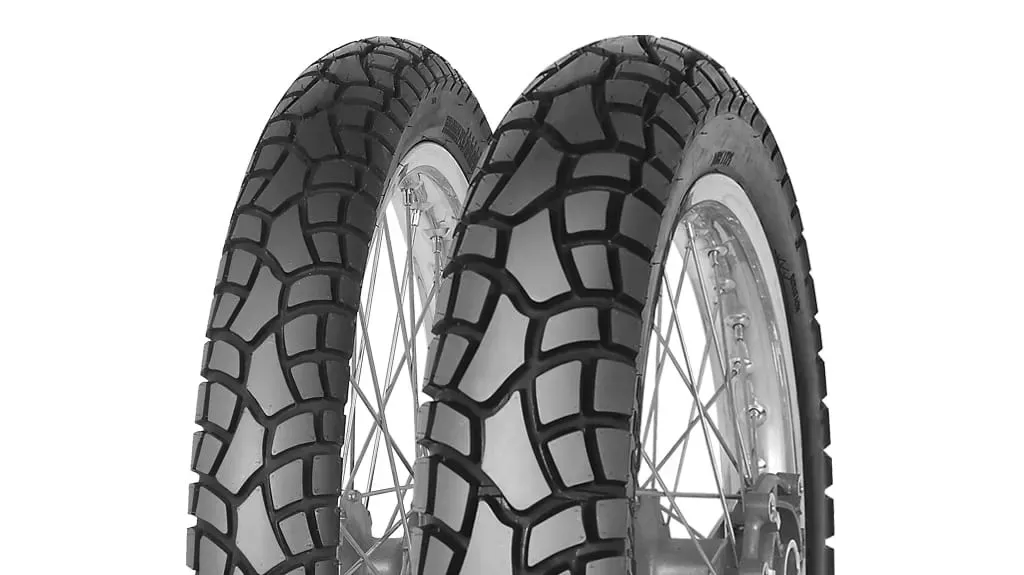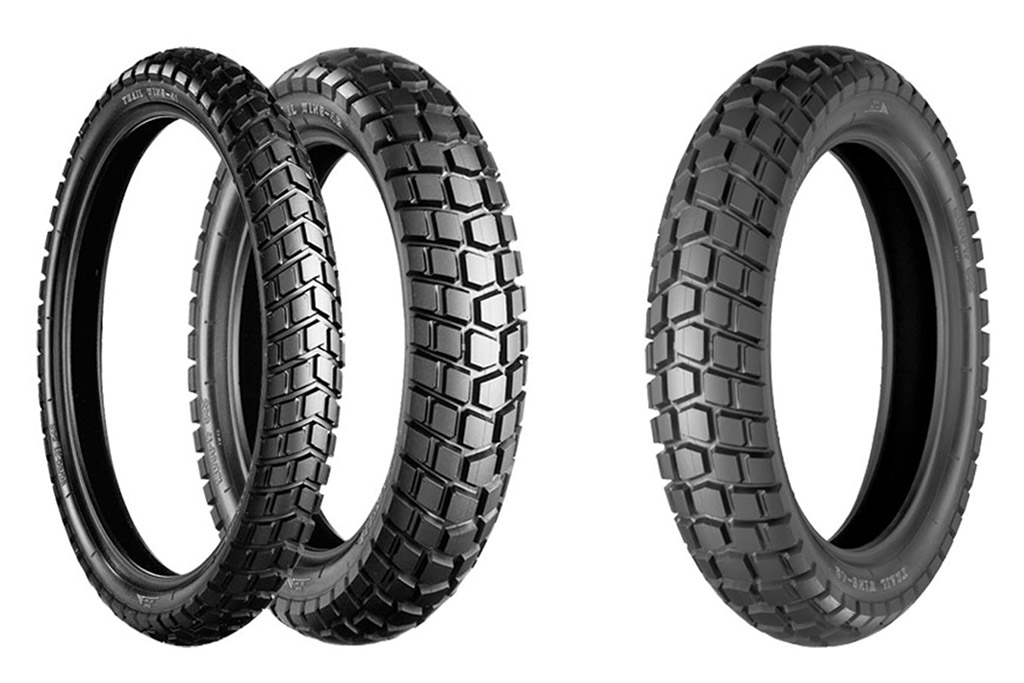Motorcycle Tyre Guide for Identifying Signs of Tyre Wear
Motorcycle Tyre Guide for Identifying Signs of Tyre Wear
Blog Article
Check out the Relevance of Selecting the Right Tyres With Our Insightful Motorcycle Tyre Overview
Picking the appropriate tires is necessary for any kind of Motorcycle fanatic. The right tires improve efficiency, boost safety and security, and add to overall convenience throughout experiences. Comprehending the various kinds, dimensions, and maintenance methods can considerably influence your riding experience. As cyclists face varied terrains and problems, recognizing exactly how to select the best tyres becomes critical. What aspects should be thought about to guarantee peak performance? The answers await in the adhering to areas.
Recognizing Various Sorts Of Motorcycle Tyres
Choosing the appropriate type of Motorcycle tire may appear overwhelming, recognizing the different alternatives offered can greatly improve a rider's experience. Motorcycle tyres are mostly categorized right into three types: touring, sporting activity, and off-road. Touring tires are designed for long-distance travel, using sturdiness and convenience on freeways. These tires feature a walk pattern that gives outstanding hold and stability, making them appropriate for numerous climate conditions.Sport tires, on the other hand, prioritize efficiency and handling, including a softer rubber compound that enhances hold throughout cornering. They are suitable for bikers who enjoy spirited experiences on twisty roads or racetracks. Off-road tyres are tailored for sturdy terrain, with a hostile step pattern that provides traction on loose surfaces like dust or crushed rock.
Assessing Your Riding Design and Demands
When assessing riding design and requires, recognizing just how various riding problems impact efficiency is crucial. This evaluation can assist motorcyclists in choosing the appropriate tire types that align with their specific requirements. By thinking about elements such as terrain and climate, riders can make enlightened choices for perfect security and experience.
Riding Conditions Impact
As motorcyclists browse different terrains and weather, comprehending how these variables affect Motorcycle performance becomes crucial. Various riding atmospheres, such as wet, completely dry, or off-road, demand details tyre characteristics to ensure safety and security and perfect handling. Damp conditions call for tires that provide much better grasp to avoid hydroplaning, while off-road riding demands robust walk patterns for grip on loosened surfaces. In addition, temperature level variants can influence tire pressure and efficiency, calling for changes based on the problems faced. Bikers have to evaluate their normal paths and environments when choosing tyres, as the best selection can considerably enhance their riding experience, guaranteeing both convenience and safety in varied scenarios. Matching tires to riding problems is necessary for effective Motorcycle performance.
Tyre Kind Introduction
Understanding the different sorts of Motorcycle tires is essential for motorcyclists aiming to boost their performance and security. Each tire type accommodates certain riding designs and problems. Sport tyres, designed for high grip and agility, are ideal for hostile riding and track days. Visiting tires focus on durability and comfort, making them suitable for long-distance journeys. Off-road tires feature deeper treads for traction on unequal surface areas, interesting experience seekers. Cruiser tyres offer a smooth trip, commonly emphasizing looks for choppers and cruisers. Dual-sport tyres blend attributes of both on-road and off-road tires, serving flexible bikers. Assessing specific riding designs and needs guarantees that the ideal tyre type is picked, ultimately improving total riding experience and safety.
The Effect of Tyre Dimension on Performance
Tire size considerably influences a bike's general efficiency, influencing stability, traction, and handling. The diameter and size of tires can significantly change a bike's dynamics. Larger diameter tires can improve high-speed performance, offering smoother trips and improved security during straight-line travel. Nonetheless, they may also require even more effort for quick maneuvering. Alternatively, narrower tyres tend to use much better dexterity and responsiveness, making them suitable for tight corners and complex riding conditions.Additionally, the aspect proportion, which relates to the tyre's elevation, plays an essential function in efficiency attributes. A lower profile tire may boost cornering stability yet can endanger comfort because of reduced padding. Eventually, picking the proper tyre dimension aligns with the motorcyclist's choices and planned usage, whether for sport, touring, or off-road riding. Comprehending these nuances assurances peak efficiency and boosts the general riding experience.
Step Patterns and Their Significance
Walk patterns on Motorcycle tyres play a necessary duty in identifying performance, influencing aspects such as hold and handling. Different kinds of step layouts cater to various weather condition problems and surfaces, ensuring optimal grip and security. Recognizing these patterns is very important for bikers seeking to improve their Motorcycle's efficiency and security.
Kinds Of Footstep Patterns
The efficiency of a bike is considerably influenced by the kind of tread pattern on its tyres. Numerous step patterns offer certain features, accommodating various riding problems. For example, slick tyres include a smooth surface area, suitable for dry conditions and auto racing, supplying optimum hold. In contrast, tires with deep grooves and intricate patterns are designed for damp or off-road conditions, improving water displacement and grip. Some tread styles, such as dual-purpose tyres, strike a balance for both on-road and light off-road usage. motorcycle tyre guide. Furthermore, sporting activity tyres frequently possess an extra hostile walk pattern, enhancing cornering stability. Understanding these kinds of step patterns assists bikers choose the ideal tires for their designated riding experiences and environmental conditions
Impact on Efficiency
Selecting the best walk pattern considerably influences a motorcycle's performance in numerous riding conditions. Tread patterns are designed to optimize grasp, managing, and security, straight affecting cornering capacity and stopping efficiency. For circumstances, a more hostile tread style enhances grip on uneven surfaces, making it suitable for off-road riding. On the other hand, a slicker tread pattern advertises smoother experiences on paved roadways, decreasing rolling resistance and boosting fuel effectiveness. The depth and arrangement of grooves likewise play a vital function, check here enabling for effective water displacement and decreasing hydroplaning risks. Inevitably, choosing an ideal tread pattern tailored to details riding settings and styles assurances enhanced control, security, and overall riding experience, highlighting the relevance of this decision for Motorcycle lovers.
Climate and Surface Viability
Weather and surface kinds greatly affect the suitability of Motorcycle tire step patterns. In wet conditions, tyres with deeper grooves and details patterns are crucial to direct water away and minimize the threat of aquaplaning. Alternatively, a flatter walk layout deals ideal surface get in touch with for dry roads, improving grasp and stability. For off-road riding, bumpy tires supply raised traction on loosened surface areas like mud and gravel. Each step pattern offers a distinctive objective; consequently, selecting the appropriate tyre is essential for efficiency and safety and security. Cyclists ought to consider their typical riding environment-- whether urban, rural, or varied terrains-- to ensure their learn this here now tyres can adequately manage the problems, promoting a much safer and a lot more enjoyable riding experience.
Maintaining Your Motorcycle Tyres for Longevity
While Motorcycle lovers frequently concentrate on efficiency and aesthetic appeals, overlooking tyre maintenance can result in premature wear and dangerous riding problems. On a regular basis checking tire stress is vital, as both under-inflation and over-inflation can adversely influence taking care of and hold. In addition, keeping the right pressure can boost gas efficiency and total performance.Routine assessments for indicators of damages, such as slits or splits, also play an essential duty in prolonging tyre life. Keeping tyres tidy from debris and contaminants guarantees peak grip. Additionally, rotating tires regularly assists distribute use evenly, prolonging their lifespan.Proper alignment and harmonizing of the wheels are required for preserving security and reducing uneven wear. Sticking to the supplier's recommendations for tyre substitute periods guarantees that cyclists are furnished with trustworthy and risk-free tyres. By prioritizing these upkeep techniques, motorcyclists can appreciate a more secure and longer-lasting riding experience.
Identifying Tyre Put On and When to Change
To ensure perfect security and performance, cyclists must be attentive in identifying tyre wear and recognizing when to change their tires. Tyre step deepness is a vital sign; a depth of 1.6 mm or much less commonly signifies the demand for substitute. Cyclists must also examine the tires for unequal wear patterns, which can suggest positioning or suspension concerns. Splits, protrudes, or noticeable cables are serious indicators of deterioration and warrant immediate replacement.Monitoring tire stress is essential as under-inflation can increase wear and concession security. Furthermore, bikers should know the age of their tires; also if the tread appears enough, tyres older than five years might require changing because of rubber destruction. Routine evaluations and maintenance will certainly aid establish that tyres continue to be in peak problem, inevitably boosting both motorcyclist safety and overall Motorcycle efficiency.

Tips for Selecting the Right Tyres for Your Bike
Choosing the ideal tires for a bike is extremely important for ensuring excellent efficiency and safety and security, especially after recognizing the indicators of wear that demand substitute. Initially, cyclists should consider their riding design and the kinds of conditions they usually come across. Sporting activity tyres use boosted grip for hostile riding, while touring tires offer durability and comfort for long journeys.Next, it's critical to examine the maker's specifications for the Motorcycle, as these guidelines guarantee compatibility. Additionally, examining tire dimension, walk pattern, and rubber compound can affect efficiency. Cyclists must likewise consider climate condition; details tyres perform better in wet or completely dry environments.Finally, buying from credible brands can assure high quality and reliability, while getting in touch with fellow bicycle riders or experts can provide beneficial understandings. By carefully taking into consideration these elements, riders can pick tires that improve their Motorcycle's efficiency, security, and overall riding experience.
Regularly Asked Inquiries
Just How Do Weather Condition Conditions Impact Tire Performance?
Weather considerably influence tyre performance, influencing grasp, managing, and use. Rain can reduce traction, while severe heat might trigger getting too hot. Cold temperatures can solidify rubber, compromising adaptability, thus influencing overall safety and ability to move when traveling.
Can I Mix Different Tire Brands on My Motorcycle?
Blending various tire brands on a motorbike can bring about irregular handling and performance - motorcycle tyre guide. Specialists recommend using the same click site brand name and model for both rear and front tires to ensure optimum safety and security and stability during trips
What Is the Ordinary Life-span of Motorcycle Tyres?

Do Motorcycle Tyres Need to Be Well balanced?
Motorcycle tires do require balancing to assure even weight circulation. Correctly well balanced tyres improve stability, improve handling, and minimize uneven wear, eventually adding to a more secure and a lot more comfy riding experience for motorcyclists.
How Usually Should I Inspect My Tyre Stress?
Normal checks of tyre pressure are necessary for safety and security and efficiency. It is suggested to inspect Motorcycle tire pressure a minimum of as soon as a month and before long experiences, making sure suitable handling and gas efficiency. These tyres feature a walk pattern that provides outstanding hold and security, making them ideal for numerous weather condition conditions.Sport tires, on the other hand, prioritize performance and handling, featuring a softer rubber substance that improves hold during cornering. On the other hand, narrower tires often tend to use better agility and responsiveness, making them perfect for tight edges and elaborate riding conditions.Additionally, the facet proportion, which relates to the tyre's elevation, plays a vital duty in performance features. Adhering to the supplier's recommendations for tire substitute intervals assures that bikers are equipped with secure and trustworthy tires. To ensure optimal safety and efficiency, motorcyclists have to be cautious in acknowledging tyre wear and understanding when to change their tyres. Sport tires offer improved hold for hostile riding, while exploring tyres offer resilience and comfort for long journeys.Next, it's important to inspect the maker's requirements for the Motorcycle, as these guidelines assure compatibility.
Report this page